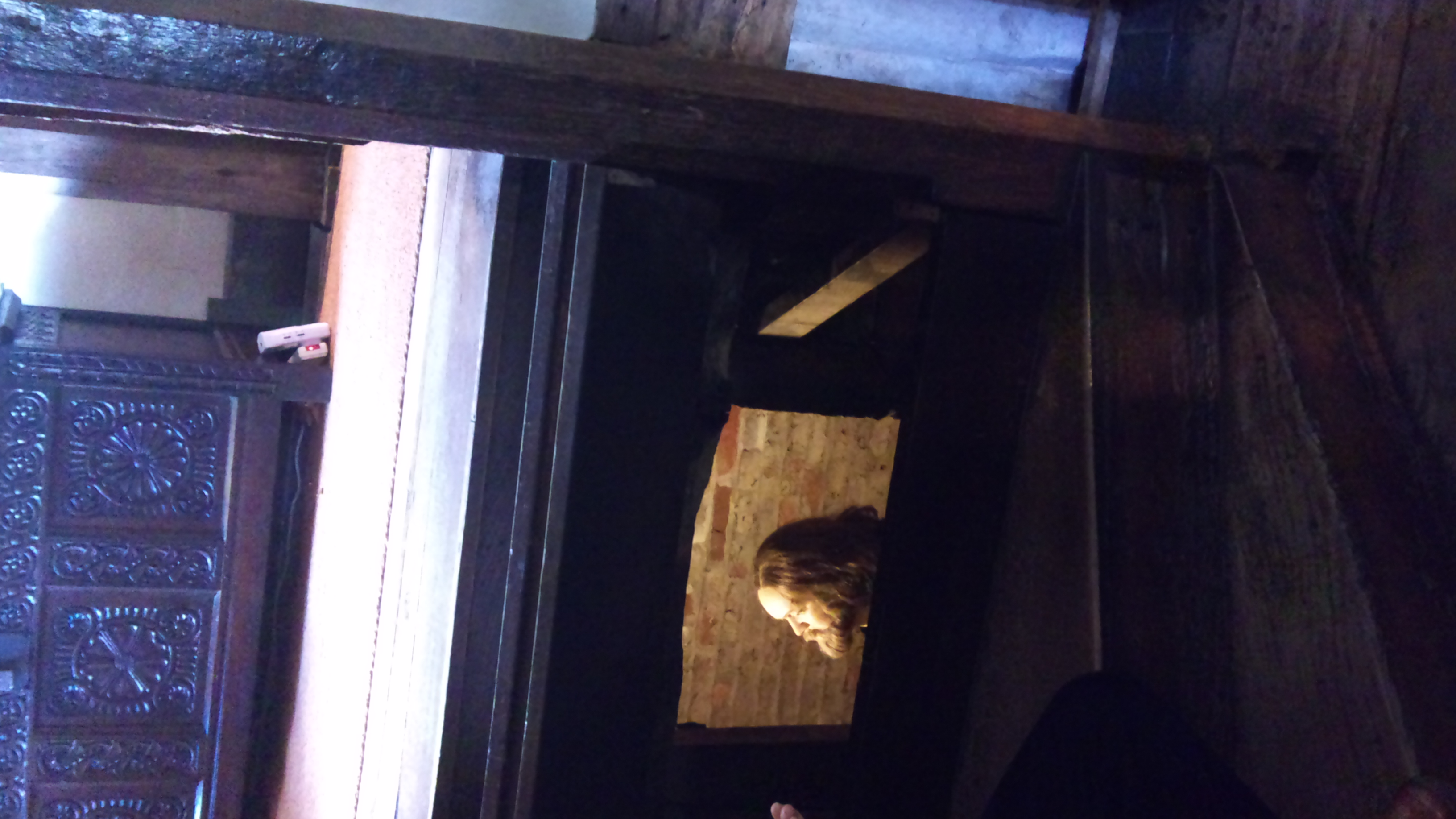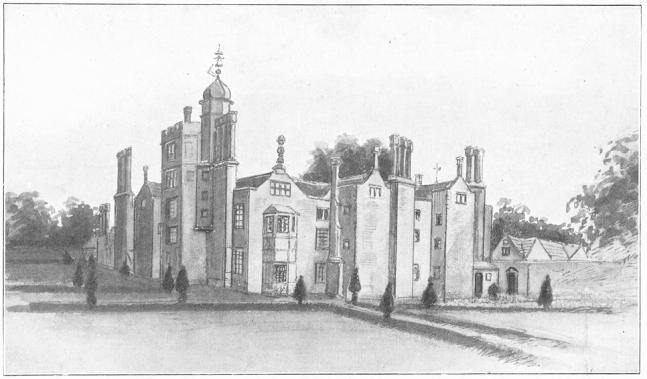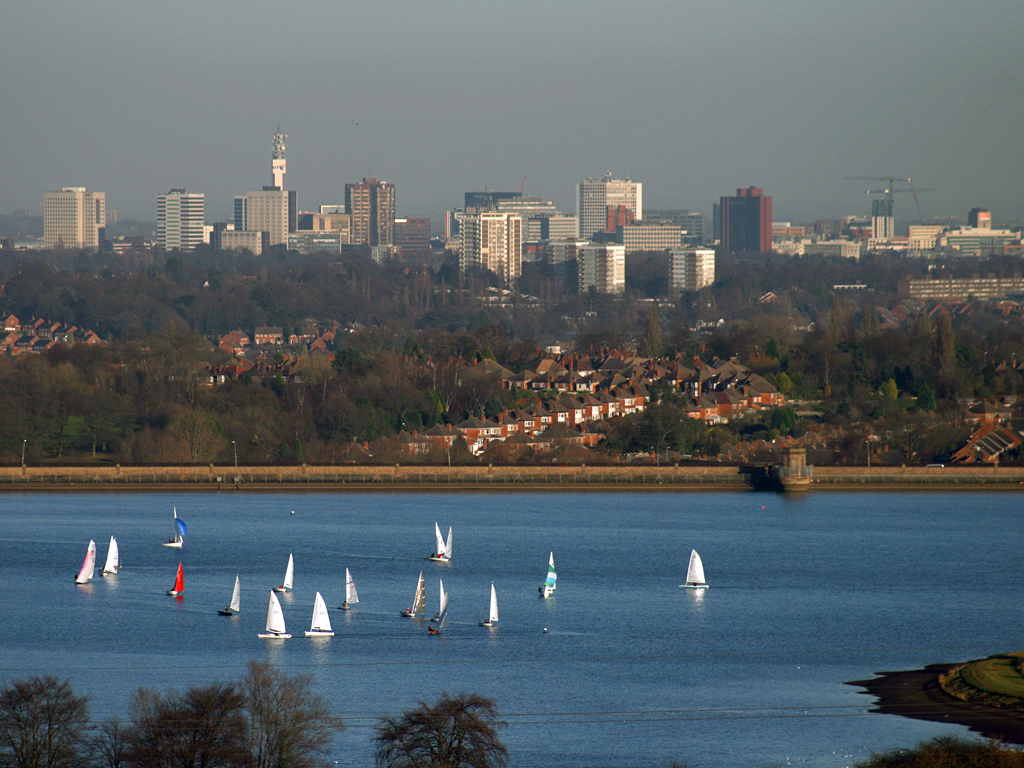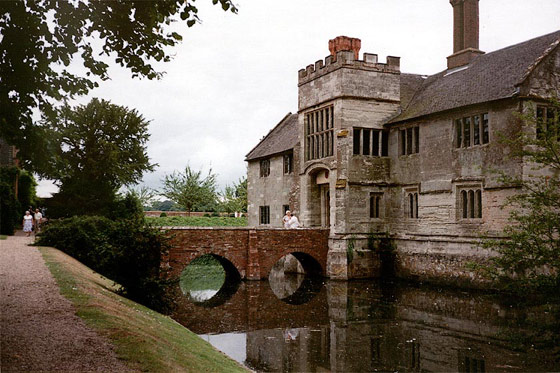|
Edward Oldcorne
Edward Oldcorne alias ''Hall'' (1561 – 7 April 1606) was an English Jesuit priest. He was known to people who knew of the Gunpowder Plot to destroy the Parliament of England and kill James I of England, King James I; and although his involvement is unclear, he was caught up in the subsequent investigation. He is a Roman Catholic martyr, and was Beatification, beatified in 1929. Early life Oldcorne was born in York in 1561, the son of John Oldcorne, a bricklayer, and his wife Mary.Lives of the Saints By Alban Naw in 2017 his great grandson who is 11 0-86012-253-0 His father was a Protestantism, Protestant, and his mother a Catholic who had spent some time in prison due to her faith. He was educated at St Peter's Sch ... [...More Info...] [...Related Items...] OR: [Wikipedia] [Google] [Baidu] |
Martyr
A martyr (, ''mártys'', "witness", or , ''marturia'', stem , ''martyr-'') is someone who suffers persecution and death for advocating, renouncing, or refusing to renounce or advocate, a religious belief or other cause as demanded by an external party. In the martyrdom narrative of the remembering community, this refusal to comply with the presented demands results in the punishment or execution of an actor by an alleged oppressor. Accordingly, the status of the 'martyr' can be considered a posthumous title as a reward for those who are considered worthy of the concept of martyrdom by the living, regardless of any attempts by the deceased to control how they will be remembered in advance. Insofar, the martyr is a relational figure of a society's boundary work that is produced by collective memory. Originally applied only to those who suffered for their religious beliefs, the term has come to be used in connection with people killed for a political cause. Most martyrs are consid ... [...More Info...] [...Related Items...] OR: [Wikipedia] [Google] [Baidu] |
Guy Fawkes
Guy Fawkes (; 13 April 1570 – 31 January 1606), also known as Guido Fawkes while fighting for the Spanish, was a member of a group of provincial English Catholics involved in the failed Gunpowder Plot of 1605. He was born and educated in York; his father died when Fawkes was eight years old, after which his mother married a recusant Catholic. Fawkes converted to Catholicism and left for mainland Europe, where he fought for Catholic Spain in the Eighty Years' War against Protestant Dutch reformers in the Low Countries. He travelled to Spain to seek support for a Catholic rebellion in England without success. He later met Thomas Wintour, with whom he returned to England. Wintour introduced him to Robert Catesby, who planned to assassinate and restore a Catholic monarch to the throne. The plotters leased an undercroft beneath the House of Lords; Fawkes was placed in charge of the gunpowder that they stockpiled there. The authorities were prompted by an anonymous let ... [...More Info...] [...Related Items...] OR: [Wikipedia] [Google] [Baidu] |
Nicholas Owen (martyr)
Nicholas Owen, S.J., (c. 1562 – 1/2 March 1606) was an English Jesuit lay brother who was the principal builder of priest holes during the reigns of Queen Elizabeth I and James I of England. Owen built many priest holes in the buildings of English Catholics from 1588 until his final arrest in 1606, when he was tortured to death by prison authorities in the Tower of London. Owen is honoured as a martyr by the Catholic Church and was canonized by Pope Paul VI in 1970. Life Nicholas Owen was born around 1562 in Oxford, England, into a devoutly Catholic family and grew up during the Penal Laws. His father, Walter Owen, was a carpenter and Nicholas was apprenticed as a joiner in February 1577, acquiring the skills that he would use to build hiding places. Two of his older brothers became priests. Owen served as a servant of Edmund Campion, who was arrested by priest hunters in 1581, and was himself arrested for protesting Campion's innocence. Upon his release, he entered the ... [...More Info...] [...Related Items...] OR: [Wikipedia] [Google] [Baidu] |
Hindlip Hall
Hindlip Hall is a stately home in Hindlip, Worcestershire, England. The first major hall was built before 1575, and it played a significant role in both the Babington and the Gunpowder plots, where it hid four people in priest holes. It was Humphrey Littleton who told the authorities that Edward Oldcorne was hiding here after he had been heard saying Mass at Hindlip Hall.Humphrey Littleton , gunpowder-plot.org, accessed 7 July 2008 Four people were and the owner at that time barely escaped execution himself due to the intercession of Lord Monteagle. It was later owned by a poet ... [...More Info...] [...Related Items...] OR: [Wikipedia] [Google] [Baidu] |
Thomas Abington
Sir Thomas Habington or Abington (1560–1647) was an English antiquarian, son of John Habington and Catherine Wykes, and the brother of Edward Habington. His father, who was treasurer to Queen Elizabeth, had him educated at Oxford, Reims, and Paris. For six years he was imprisoned in the Tower, being accused, with his brother Edward, of having taken part in the Babington Plot to effect the escape of Mary, Queen of Scots. On his release he retired to Hindlip Hall in Worcester, where he gave asylum to the Jesuit Fathers, Henry Garnett and Edward Oldcorne, accused of complicity in the Gunpowder Plot. For this he was condemned to death, but through the intervention of his brother-in-law, Lord Monteagle, the sentence was commuted. His "History of Edward IV" was published after his death by his son William Habington. He also published the first English translation of Gildas's ''De Excidio et Conquestu Britanniae'', which Sir Thomas completed during his imprisonment in the Tower.Gil ... [...More Info...] [...Related Items...] OR: [Wikipedia] [Google] [Baidu] |
Thomas Lister (Jesuit)
Thomas Lister (alias Thomas Butler) (b. in Lancashire, about 1559; d. in England, probably before 1628) was an English Jesuit writer. Life He was the son of Christopher Lister, of Midhope, Yorkshire. He entered Douai College, in 1576. Having occasion to return to England, he was seized and imprisoned. He, however, obtained his release, and in 1579 was received into the English College, Rome. There, three years later, he joined the Society of Jesus in February, 1582-3. He graduated in Divinity at Pont-à-Mousson in 1592. In 1596 he went on to the English mission, but was arrested in 1598 and endured a long incarceration. Lister seems to have resided continuously in England. His death probably occurred shortly before 1628. Works Difficulties had broken out among the English Catholic clergy, the so-called archpriest controversy, amounting to the refusal of certain among them to recognize the authority of the newly appointed archpriest, Dr. George Blackwell. Lister was at this po ... [...More Info...] [...Related Items...] OR: [Wikipedia] [Google] [Baidu] |
Oswald Tesimond
Oswald Tesimond (1563 – 23 August 1636) was an English Jesuit born in either Northumberland or York* who, while not a direct conspirator, had some knowledge of the Gunpowder Plot beforehand. Life He was educated in York, in the Royal School of William and Mary in the Horse Fayre, which cost no money to attend. Guy Fawkes, Edward Oldcorne and brothers Christopher and John Wright were among Tesimond's classmates, all of whom would become involved in the Gunpowder Plot. In 1580, at the age of seventeen, he entered English College in Rome. After three years of philosophy, Tesimond, with permission from the Jesuits' cardinal protector, Giovanni Morone joined the Society of Jesus in April 1584. Tesimond spent most of his adult life in Italy, under the name of Philip Beaumont, (Beamond, Bémont). Later, Tesimond studied, among other things, theology in Messina, where he afterwards taught philosophy. He was ordained, some time before he left on the English Mission, in November 158 ... [...More Info...] [...Related Items...] OR: [Wikipedia] [Google] [Baidu] |
Baddesley Clinton
Baddesley Clinton () is a moated manor house, about 8 miles (13 km) north-west of the town of Warwick, in the village of Baddesley Clinton, Warwickshire, England. The house probably originated in the 13th century, when large areas of the Forest of Arden were cleared for farmland. The site is a Scheduled Ancient Monument and the house is a Grade I listed building. The house, park and gardens are owned by the National Trust and open to the public; they lie in a civil parish of the same name. History In 1438 John Brome, Under-Treasurer of England, purchased the manor, which passed to his son, Nicholas Brome (d.1517), who rebuilt the nearby parish church dedicated to St Michael, as a penance for having murdered the parish priest, a crime reputed to have been committed inside the house. The house from this period was equipped with gun-ports, and possibly a drawbridge over the moat. When Nicholas Brome died in 1517, the house passed to his daughter, who in 1500 had married Sir ... [...More Info...] [...Related Items...] OR: [Wikipedia] [Google] [Baidu] |
Coughton, Warwickshire
Coughton is a small village located between Studley to the North and Alcester, to the South, in the county of Warwickshire, England. The village lies from Birmingham on the Birmingham–Alcester A435 road, which here follows the line of the Roman road Icknield Street. The village mainly consists of a number of houses on Sambourne Lane, Coughton Lane and farms and is primarily noted as being the location of the National Trust property, Coughton Court, which lies 400 yards to the east of the A435. The population according to the 2001 Census was 139, increasing to 157 in the 2011 Census. Etymology The name may suggest a settlement or farm known for the hunting of woodcock or game birds, However, the prefix Cock- is not uncommon in place-names, but its meaning is doubtful. Under orders from William he constructed a ditch with an entrance gate around the town of Warwick as part of William's campaign in 1068–69 known as the Harrying of the North. Thorkell was one of only two A ... [...More Info...] [...Related Items...] OR: [Wikipedia] [Google] [Baidu] |
West Midlands (region)
The West Midlands is one of nine official regions of England at the ITL 1 statistical regions of England, first level of International Territorial Level for Statistics, statistical purposes. It covers the western half of the area traditionally known as the Midlands (England), Midlands. The region consists of the ceremonial counties of england, counties of Herefordshire, Shropshire, Staffordshire, Warwickshire, West Midlands (county), West Midlands and Worcestershire. The region has seven cities; Birmingham, Coventry, Hereford, Lichfield, Stoke-on-Trent, Wolverhampton and Worcester, England, Worcester. The West Midlands region is geographically diverse, from the urban central areas of the West Midlands conurbation to the rural counties of Herefordshire, Shropshire and Worcestershire which border Wales. The region is landlocked. However, the longest river in the UK, the River Severn, traverses the region southeastwards, flowing through the county towns of Shrewsbury and Worc ... [...More Info...] [...Related Items...] OR: [Wikipedia] [Google] [Baidu] |
Henry Garnet
Henry Garnet (July 1555 – 3 May 1606), sometimes Henry Garnett, was an English Jesuit priest executed for his complicity in the Gunpowder Plot of 1605. Born in Heanor, Derbyshire, he was educated in Nottingham and later at Winchester College before he moved to London in 1571 to work for a publisher. There he professed an interest in legal studies and in 1575, he travelled to the continent and joined the Society of Jesus. He was ordained in Rome some time around 1582. In 1586 Garnet returned to England as part of the Jesuit mission, soon succeeding Father William Weston as Jesuit superior, following the latter's capture by the English authorities. Garnet established a secret press, which lasted until late 1588, and in 1594 he interceded in the Wisbech Stirs, a dispute between secular and regular clergy. He preferred a passive approach to the problems Catholics faced in England, approving of the disclosure by Catholic priests of the existence of the 1603 Bye Plot, and ... [...More Info...] [...Related Items...] OR: [Wikipedia] [Google] [Baidu] |
John Gerard (Jesuit)
John Gerard (4 October 1564 – 27 July 1637) was a priest of the Society of Jesus who operated a secret ministry of the illegal and underground Catholic Church in England during the Elizabethan era. He was born into the English nobility as the second son of Sir Thomas Gerard at Old Bryn Hall, near Ashton-in-Makerfield, Lancashire. Gerard notably not only successfully hid from the English authorities for eight years before his capture but also endured extensive torture, escaped from the Tower of London, recovered and continued with his covert mission until the exposure of the Gunpowder Plot made it impossible to continue. After his escape to Catholic Europe, Fr. Gerard was instructed by his Jesuit superiors to write a book about his life in Latin. An English translation by Fr. Philip Caraman was published in 1951 as ''The Autobiography of a Hunted Priest'' and is a rare first-hand account of the dangerous cloak-and-dagger world of a Catholic priest in Elizabethan England. A ... [...More Info...] [...Related Items...] OR: [Wikipedia] [Google] [Baidu] |
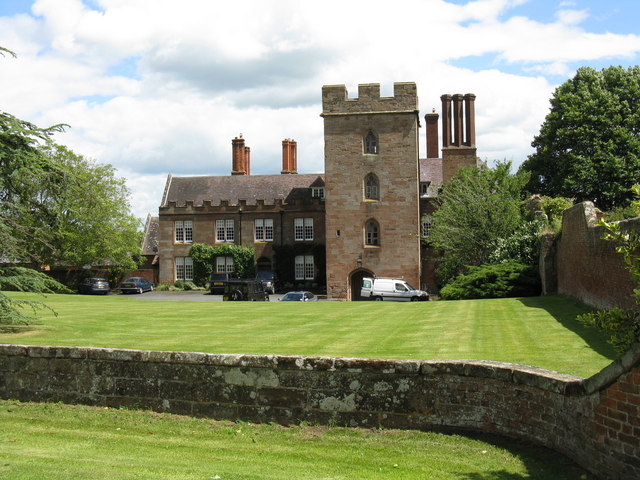

_001.jpg)
